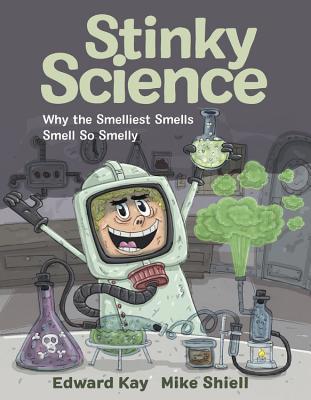Title: Stinky
Science
Author: Edward Kay
Illustrations: Mike
Shiell
Publisher: Kids Can Press
ISBN: 9781771383820
Review:
The world we live in has
things that we find very unpleasant to smell. But without smell we can’t taste,
and we wouldn’t know that something may be wrong. This stinky guide will help
educate readers on the science of smell.
Not being able to smell is
a serious medical condition called anosmia and can lead to depression. We all
know that smelling smoke means there could be a fire and with that we go into a
danger mode which leads to a fight or flight reaction. Other danger smells are
rotting flesh which is caused by bacteria and fungi. Vultures are an animal
that loves that smell. For them it’s a dinner bell. Humans can’t eat rotting
flesh. Our bodies can’t digest it and we could die. Salmonella is an odorless
bacterium that makes humans sick and some people have died from eating foods
contaminated with this bacterium.
Our noses can detect over
10,000 unique smells. It’s why we know the difference between a flower’s smell and
a poopy smell. Smell is processed through the olfactory bulb in your brain. Did
you know that girls have a better sense of smell than boys? Smells are a part
of our memory. We remember the things that smell good and bad. Smell is also
linked to emotions. Animals use stinky smells like skunks, polecats and even
some beetles, as a defense mechanism against animals that prey on them.
This handy guide will teach
readers all about smells, how the brain works identifying smells, how odors are
chemicals, how odors are similar to food and other objects that don’t have anything
in common. The science of smell will have readers engaged and can answer a lot
of questions. Hilariously silly illustrations can be found on every page
enlightening readers to the science of smell. Parents and teachers can use this
tool to open up discussions with young readers regarding the good and bad
smells they’ve experienced and what memories and emotions they’ve had
associated with smell.


Comments
Post a Comment
Be an advocate for literacy. Thanks for your support and for stopping by.